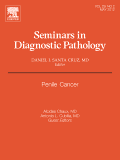
SEMINARS IN DIAGNOSTIC PATHOLOGY
Scope & Guideline
Elevating standards in diagnostic pathology education.
Introduction
Aims and Scopes
- Diagnostic Pathology of Neoplasms:
The journal covers a wide range of neoplastic conditions, particularly focusing on the diagnostic challenges and advancements in understanding various tumors, including salivary gland tumors, germ cell tumors, and lymphoproliferative disorders. - Immunohistochemistry and Molecular Pathology:
There is a significant emphasis on the use of immunohistochemical techniques and molecular pathology to improve diagnostic accuracy and prognostic assessments in various cancers. - Emerging Diagnostic Techniques:
The journal highlights new diagnostic methodologies, including artificial intelligence and machine learning applications in pathology, providing insights into how these technologies can enhance diagnostic processes. - Clinical Implications of Pathological Findings:
Each publication often discusses the clinical ramifications of pathological diagnoses, aiming to bridge the gap between laboratory findings and patient management. - Genetic Syndromes and Tumor Pathology:
The journal also explores the association between hereditary syndromes and their pathological manifestations, particularly in renal and hematological malignancies.
Trending and Emerging
- Advancements in AI and Machine Learning:
There is a growing trend towards integrating artificial intelligence and machine learning into pathology, with numerous articles exploring their applications for improving diagnostic accuracy and efficiency. - Focus on Rare Tumors and Complex Cases:
Recent themes indicate an increasing interest in rare tumors and complex diagnostic cases, particularly in the context of genetic syndromes and their pathological implications. - Detailed Exploration of IgG4-related Diseases:
There has been a notable increase in publications related to IgG4-related diseases, reflecting a growing recognition of their complexity and the diagnostic challenges they present. - Personalized Medicine in Oncology:
The journal is increasingly focusing on personalized approaches to cancer treatment, emphasizing the role of molecular profiling and tailored therapies in diagnostic pathology. - Interventional Cytopathology:
Emerging interest in interventional cytopathology techniques is evident, particularly regarding the role of cytopathologists in performing procedures and real-time diagnostics.
Declining or Waning
- General Pathology Topics:
There has been a noticeable decline in publications focusing on general pathology themes, suggesting a shift towards more specialized and complex topics rather than broad overviews. - Traditional Cytopathology Techniques:
The focus on classical cytopathology techniques, such as FNA (Fine Needle Aspiration) and conventional cytological methods, has decreased, indicating a move towards more advanced methodologies and technologies. - Non-neoplastic Conditions:
The journal has seen fewer articles addressing non-neoplastic conditions, possibly due to a growing emphasis on cancer pathology and diagnostics. - Basic Histopathology:
Topics centered around basic histopathological techniques and descriptions have become less frequent, as there is a stronger trend towards integrating advanced molecular techniques and AI in diagnostic processes.
Similar Journals
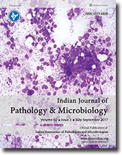
Indian Journal of Pathology and Microbiology
Championing Open Access to Scientific ExcellenceIndian Journal of Pathology and Microbiology, published by Wolters Kluwer Medknow Publications, is a distinguished open-access journal that has been fostering knowledge dissemination in the fields of pathology and microbiology since 2008. With an ISSN of 0377-4929 and E-ISSN 0974-5130, this journal serves as a critical resource for researchers and practitioners committed to advancing their understanding of medical sciences in India and beyond. Spanning decades of valuable research contributions since its establishment in 1972, it provides a platform for peer-reviewed articles that explore current trends and innovations in medicinal pathology and microbiological studies. Although it holds a Q4 ranking in categories such as medicine and microbiology, it maintains a notable Q3 classification in pathology and forensic medicine, highlighting its relevance to contemporary scientific discussions. Accessible freely to a global audience, the journal plays a pivotal role in enhancing scholarly communication and collaboration, making it an indispensable tool for students, professionals, and researchers alike aiming to contribute to this evolving discipline.

Diagnostic Pathology
Elevating Diagnostics with Groundbreaking FindingsDiagnostic Pathology is a prominent open-access journal published by BMC, dedicated to advancing the field of pathology by providing a platform for high-quality research findings since its inception in 2006. Based in the United Kingdom, the journal covers a broad spectrum of topics within the realms of histology, pathology, and forensic medicine, facilitating discussions that are crucial for both clinical and laboratory settings. With an impressive impact factor that places it in the Q2 category across multiple categories including Histology and Miscellaneous Medicine, it ranks favorably in Scopus with notable positions in the 71st and 55th percentiles for Pathology and Histology respectively. As a valuable resource for researchers, professionals, and students alike, Diagnostic Pathology promotes the dissemination of cutting-edge studies and findings, thereby contributing significantly to the evolving landscape of medical science. The journal’s commitment to open access enhances its accessibility, ensuring that valuable research is freely available to a global audience.

APPLIED IMMUNOHISTOCHEMISTRY & MOLECULAR MORPHOLOGY
Transforming pathology through rigorous scientific inquiry.Applied Immunohistochemistry & Molecular Morphology, published by Lippincott Williams & Wilkins, stands as a pivotal resource within the fields of histology, medical laboratory technology, and pathology. With an ISSN of 1541-2016 and an E-ISSN of 1533-4058, this journal has been contributing significant research and advancements since its inception in 1996. It serves a diverse audience, including researchers, professionals, and students, aiming to enhance the understanding of immunohistochemical techniques and molecular morphology. Recognized for its quality, it holds category quartiles of Q3 in histology and Q2 in medical laboratory technology and pathology and forensic medicine as of 2023. The journal's rigorous peer-review process ensures that only the most impactful findings are disseminated, thus advancing the education and practice in these critical domains of study. Though it is not an open-access journal, it remains essential for keeping abreast of the latest methodological innovations and applications in pathology and laboratory science, as evidenced by its respectable Scopus rankings and the continual convergence of groundbreaking research published through 2024.

AMERICAN JOURNAL OF SURGICAL PATHOLOGY
Empowering Pathologists with Groundbreaking KnowledgeThe American Journal of Surgical Pathology, published by Lippincott Williams & Wilkins, is a premier peer-reviewed journal serving as a vital resource for pathologists, surgeons, and researchers in the medical field. With an impressive impact factor reflective of its esteemed standing in the academic community, the journal ranks in the Q1 quartile for Anatomy, Pathology and Forensic Medicine, and Surgery as of 2023. The journal's Scopus rankings further highlight its significance, placing it within the top tiers in multiple medical disciplines. Established in 1977 and continuing through 2024, its scope encompasses groundbreaking research, critical reviews, and updates in surgical pathology, making it an essential tool for advancing the scientific community's understanding of disease mechanisms and therapeutic approaches. Researchers, clinicians, and students will find both comprehensive studies and innovative insights, ensuring they remain informed about the latest developments in surgical pathology.

Oral & Maxillofacial Pathology Journal
Transforming Clinical Practices in Oral HealthOral & Maxillofacial Pathology Journal is a prominent peer-reviewed publication dedicated to advancing the field of oral and maxillofacial pathology. Published by the KAIRALI SOCIETY OF ORAL & MAXILLOFACIAL PATHOLOGISTS, this journal aims to provide a platform for sharing innovative research, clinical practices, and new techniques related to the diagnosis and management of oral diseases. With a commitment to open access, it ensures that valuable knowledge reaches a global audience of researchers, dental professionals, and students alike. Although specific impact metrics such as the HIndex and Scopus ranking are not listed, the journal is regarded as an essential resource for those involved in the oral health community. It plays a crucial role in fostering collaboration and disseminating cutting-edge advancements that can enhance patient care and clinical outcomes in oral pathology. For professionals looking to stay ahead in this dynamic field, Oral & Maxillofacial Pathology Journal serves as an indispensable tool for both foundational learning and advanced research.
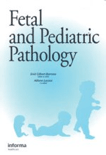
Fetal and Pediatric Pathology
Advancing knowledge in fetal and pediatric health.Fetal and Pediatric Pathology, an esteemed journal published by TAYLOR & FRANCIS INC, is dedicated to advancing the field of pediatric and fetal medicine through the dissemination of high-quality research and clinical insights. With an ISSN of 1551-3815 and an E-ISSN of 1551-3823, the journal has been a key resource for researchers and practitioners since its inception in 1983. Based in the United Kingdom, it covers a broad spectrum of topics relevant to Medicine, Pathology and Forensic Medicine, and Pediatrics, Perinatology, and Child Health, consistently reflecting on contemporary challenges faced in these fields. The journal has attained a commendable Q3 ranking within its categories as of 2023, underlining its relevance in the academic community. Though not an open-access publication, the research presented in Fetal and Pediatric Pathology plays a pivotal role in informing practice, guiding future studies, and enhancing the understanding of diseases affecting fetuses and children. Its convergence of research throughout multiple years, continuing until 2024, marks it as a crucial platform for ongoing scientific dialogue and innovation, aimed at fostering better health outcomes for younger populations.
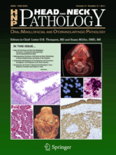
Head & Neck Pathology
Advancing the Frontiers of Head & Neck MedicineHead & Neck Pathology is a leading journal dedicated to advancing the study of pathologies affecting the head and neck region, published by Springer. With an ISSN of 1936-055X and E-ISSN of 1936-0568, this journal serves as a vital resource for the dissemination of research in oncology, otorhinolaryngology, and pathology, achieving impressive rankings of Q2 in Oncology and Q1 in both Otorhinolaryngology and Pathology & Forensic Medicine in 2023. Since its inception in 2007, Head & Neck Pathology has continued to provide a platform for innovative research findings, case studies, and reviews, fostering a deeper understanding of head and neck diseases. The journal's commitment to excellence is reflected in its rigorous peer-review process and accessibility through various academic platforms. Researchers, clinicians, and students will find valuable insights and knowledge that can enhance clinical practice and improve patient outcomes in the dynamic field of head and neck pathology.
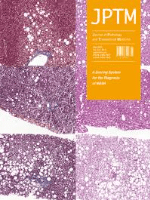
Journal of Pathology and Translational Medicine
Empowering the Future of Pathology Through ResearchThe Journal of Pathology and Translational Medicine, published by the Korean Society of Pathologists, is a distinguished peer-reviewed Open Access journal that has been at the forefront of advancing the field of pathology and histology since its inception in 1985. With an established ISSN of 2383-7837 and an E-ISSN of 2383-7845, the journal serves as a vital platform for disseminating high-quality research, fostering collaboration among professionals and offering valuable insights into both clinical applications and theoretical advancements. Recognized for its influence in the field, it holds a commendable Q2 ranking in both Histology and Pathology & Forensic Medicine categories in 2023, and ranks #52/208 in Scopus for Medicine – Pathology and Forensic Medicine, demonstrating its impact and reach within the academic community. Located in South Korea at 1209 Gwanghwamun Officia, 92 Saemunan-ro, Jongno-gu, Seoul 03186, this journal not only caters to researchers and professionals but also supports students striving to deepen their understanding of pathology. Join the growing body of knowledge and stay updated with the latest findings in this essential field of study through the journal's open access format, promoting worldwide accessibility and engagement.

International Journal of Clinical and Experimental Pathology
Unlocking the Secrets of Pathology for AllInternational Journal of Clinical and Experimental Pathology, published by E-CENTURY PUBLISHING CORP, serves as a vital resource for professionals in the field of pathology. With its ISSN 1936-2625, the journal has positioned itself within the competitive landscape of medical journals, achieving commendable rankings in Scopus, particularly in the categories of Pathology and Forensic Medicine (Rank #98/185) and Histology (Rank #38/58). Although its coverage in Scopus has been discontinued, the journal’s past contributions from 2009 to 2017 continue to be a touchstone for researchers interested in advancing their understanding of clinical and experimental pathology. The open-access format ensures accessibility to a wide audience, fostering collaboration and education in this essential medical discipline. By bridging clinical research and experimental findings, this journal plays a crucial role in disseminating knowledge and enhancing practices within pathology, making it an indispensable tool for researchers, professionals, and students alike.
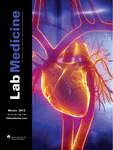
AMERICAN JOURNAL OF CLINICAL PATHOLOGY
Your Essential Resource for Clinical Pathology InsightsThe American Journal of Clinical Pathology, published by Oxford University Press Inc, stands as a vital resource in the fields of pathology and clinical medicine. With a rich history dating back to 1945 and an impressive impact factor reflected in its Q1 ranking in Pathology and Forensic Medicine, this journal serves as a cornerstone for researchers and professionals seeking to advance their knowledge and practice. Covering a breadth of topics within the discipline, it is recognized in 2023 as ranked #24 out of 208 in its category, highlighting its esteemed reputation within the scientific community. Although the journal does not currently offer open access, its rigorous peer-reviewed articles and cutting-edge research make it an essential addition to any academic or clinical library. The ISSN for print version is 0002-9173, with an E-ISSN of 1943-7722 available for digital access. Researchers, students, and practitioners alike will benefit from its comprehensive scope and commitment to disseminating high-quality scientific inquiry.